Nothing gives me more pleasure than having my indoor plants refreshed, repotted and repositioned, ready for a new year ahead. All too often we either love our houseplants or neglect them to death. But with some common sense on your part, a little love and a dash of courage, your indoor plants can live and thrive this year. Here are eight things to keep in mind.
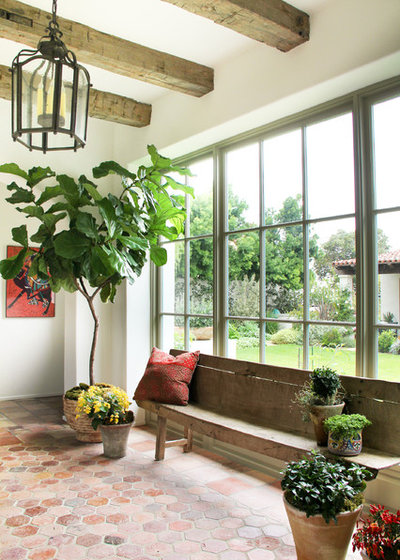
Chris Barrett Design
1. Position them well. It’s true: Where you live makes a difference to your health. And for a plant, nothing is more true. When placing plants in your home, make sure the location has good ventilation and natural light. And keep them out of direct sunlight. This will give them a more even growing environment, which will reduce stress on the plant and water loss.
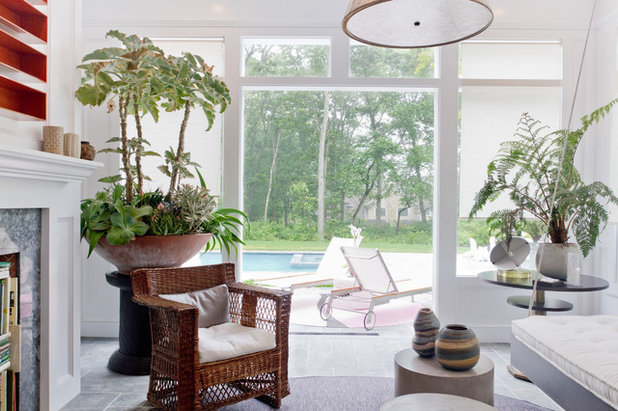
Rikki Snyder
2. Be water wise. If anything were likely to be killed with kindness, it would be an indoor plant. Knowing how much and how often to water is the key to not only keeping plants alive but helping them thrive. A great indicator that a plant needs watering is when its leaves start to droop. Oddly, this is also an indication that a plant has been overwatered. Once a plant has root rot from overwatering, it can be very difficult for it to recover. For most plants, the soil should be kept moist but not saturated — use your finger as a guide; if it feels dry an inch or so down, give it a drink.
Where and how your plants grow in the wild are great indicators of how much water they need. The pots shown here are good examples, as the dry-, hot-climate plants on the left are grouped together and need much less water than the rain forest tree fern on the right.
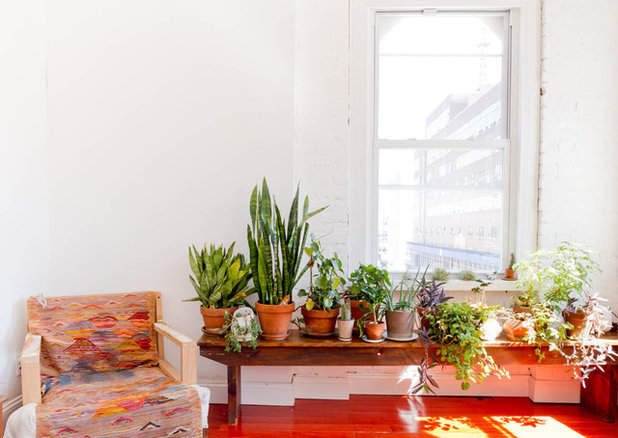
Rikki Snyder
3. Think small. While a large, striking feature pot looks outstanding in a home, don’t discount smaller pots. Smaller containers can be easily swapped out, given a spell outside or moved around the home. A collection of succulents like this is a low-maintenance but high-impact way to use plants inside.
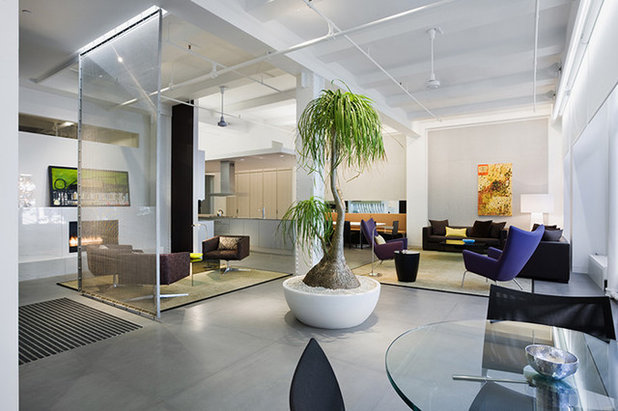
WXY architecture + urban design
4. Give them room to grow. If you do have the room for a large feature plant, like this gorgeous ponytail palm (
Beaucarnea recurvata), then you need to have a regular maintenance plan. Large plants are an investment and need good care. Make sure the pot you choose allows room for the plant to grow over the years. This ponytail palm is a slow-growing species that requires little water.
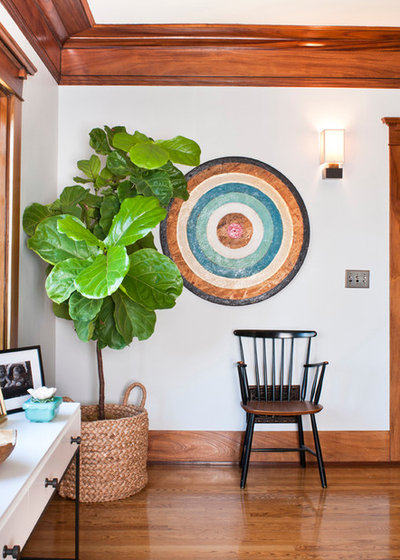
Taylor Jacobson Interior Design
5. Keep them clean. Plants rely on their leaves to make their food via photosynthesis. The surface of their leaves is covered with tiny little vents that open and close during the day and can become clogged with dust. Outside, the leaves get washed clean with rain; indoors, a gentle wiping with a clean, damp cloth once a month will keep the leaves looking shiny and healthy.
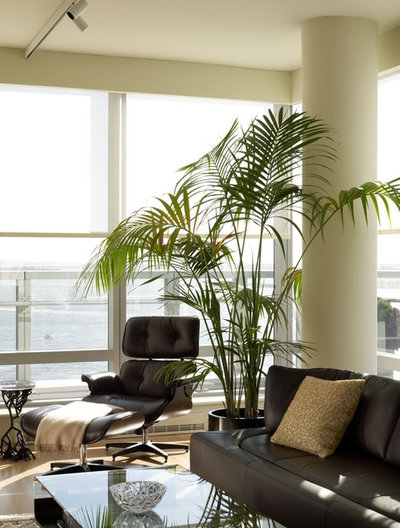
Incorporated
For plants with more intricate leaves, like this palm, taking them outside and hosing them off to clean the leaves will do them wonders. Better still, leave them out on a rainy day and get all the added benefits that only rainwater can provide.
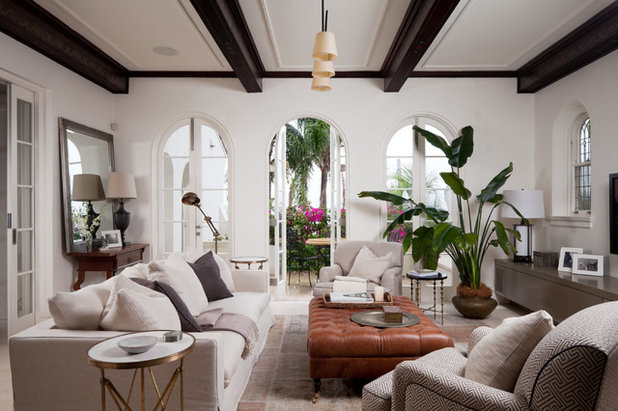
Salt Interiors Joinery
6. Feed them. All plants benefit from a little extra fertilizer, but for potted plants it is even more important. Always choose the best potting mix you can find, one that contains a slow-release fertilizer and water crystals. If you are potting a specific species, like orchids, cacti or citrus, or in a terra-cotta pot, get a mix specifically designed for these plants and conditions. However, even the best potting mixes go stale over time, so you should repot your plants every year or two. Most slow-release fertilizers last six to nine months, so if the mix you chose has one included, remember to top it up once it has worn out. You could also add a liquid fertilizer to your watering can once or twice a month.
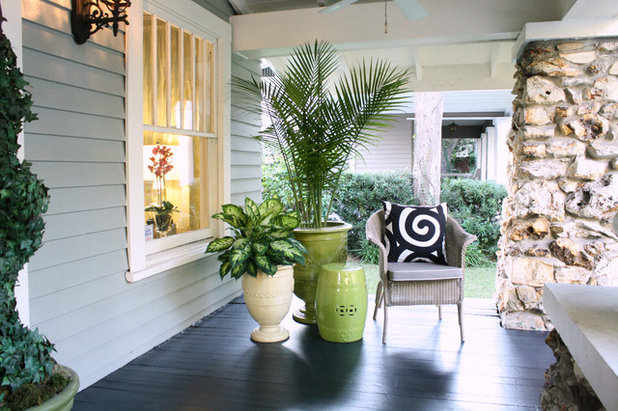
Mina Brinkey
7. Give them some R&R. Indoor plants benefit from a spell outside once in a while. For small to medium-size pots, it is a good idea to have a rotation system. By leaving plants in black plastic pots (the type they come from the nursery in), you can slot them into your more decorative pots and change them as often as you like. Make sure the outdoor location is similar to the indoor one. If a plant is not used to direct sunlight, its leaves will burn and, in some cases, the plant will die.
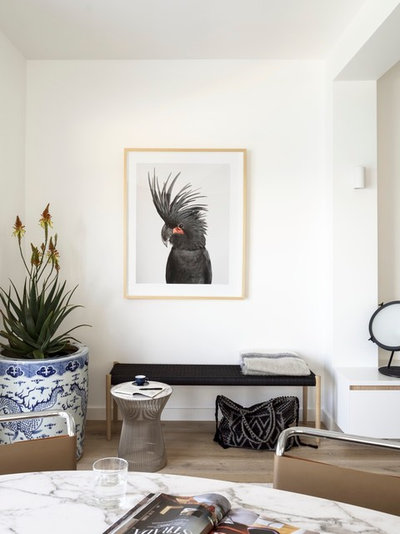
Decus Interiors
8. Choose the right pot. Of course, a plant is nothing without the pot, so it is important to get it right. Some pots can be very heavy even before you fill them with soil and plants. By sliding plants in their plastic pots into feature pots, you will reduce the risk of overwatering and make maintenance, like repotting, much easier. Having a pot within a pot also allows you to have a tray underneath to catch excess water before it spills onto the carpet and stops your plants from getting wet feet. Self-watering pots are also great, as they give an even, consistent water supply to the plant.
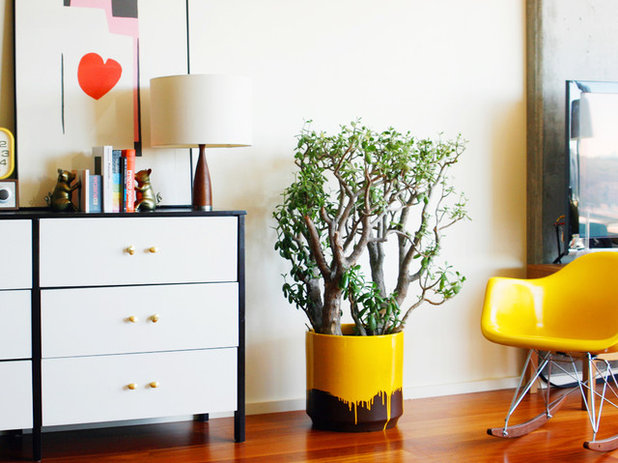
Dabito
If underwatering is your downfall, tough succulents like this jade (
Crassula ovata)
will be forgiving. All in all, there is an indoor plant suitable for everyone. By doing a little research and getting into a good routine, you too will have happy plants.
Tell us: What plants have you grown successfully in your home? What has helped them thrive? Share your tips and pictures in the Comments.
More:10 Top Plants to Grow Indoors
Indoor Winter Gardens for Cheerier Days





